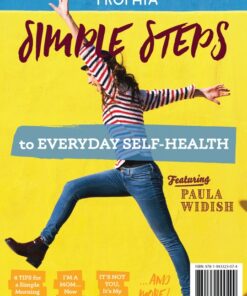I just love opening up to a random page in D.C. Jarvis’s book Folk Medicine: A New England Almanac of Natural Health Care from a Noted Vermont Country Doctor. Every time I do, I come across some fascinating piece of information that makes me think, “Really?! I had no idea. How interesting!” Then I completely lose track of time, flipping through the pages for at least half an hour, which is exactly what happened yesterday.
Maybe it’s because Folk Medicine was published in 1958. Maybe it’s because over the years we’ve come to believe our modern methods are better or more useful than what came before. But there is something about the simplicity of Dr. Jarvis’s philosophy that is stunning. And, I’m sad to say, fellow self-healthers, it’s something we’ve lost.
From most everything I see, hear, and read today, it appears folk medicine truly is a vanished art. What a shame this is, since we’re smack dab in the middle of a time when getting back to the basics of living a healthy life is in such demand.
So what were the tidbits that had my nose buried in the pages of Folk Medicine yesterday? Well, on page 72, under the subtitle “Overweight,” Dr. Jarvis presents a Vermont folk medicine method for determining a person’s ideal weight:
“Twice around the wrist equals once around the lower part of the neck. Twice around the neck at its lowest part equals once around the waist.”
Fascinating, right? I love that the estimate is based on the individual and their natural proportioning. (And why is it not just twice around the lowest part of the neck equals once around the waist? You got me. I guess the wrist measurement confirms that your neck isn’t inordinately fat or thin!) On the next page, Dr. Jarvis shares a more quantitative estimate for determining ideal weight, this one a formula developed by Dr. Lulu Hunt Peters:
- Measure your height without your shoes.
- Take the number of inches over 5 feet and multiply this by 5½.
- To this number add 110. This will give you your ideal weight.
Stunningly simple, yes? After reading this, I couldn’t help myself—I had to read it out loud to my family. This got each of us doing the mental math to figure out his or her personal number. Our oldest couldn’t help but run for the scale so we could each hop on.
The hubs and I were reluctant, but we figured, “Well, it will tell us what our next self-health goals should be.” And, holy buckets, did it ever. Onward and upward! Well, in this case, maybe I should say onward and downward— at least a little bit. ;)
Of course, Dr. Jarvis wasn’t going to leave it at that. For those folks who find their weight is not ideal, he offered a classic Vermont folk medicine solution: apple cider vinegar (ACV). Yup, back in the day, ACV was known as a simple way to “bring about a disappearance of excess fat.”
With each meal, Dr. Jarvis advised, a person should sip a glass of water with two teaspoons of ACV added to it. By doing so, he said, they would find their waistline an inch smaller in two months time. In two more months, another inch will have vanished. The next inch will only take a month to disappear. And so on.
Admittedly, this is a very gradual weight loss method, but it’s also brilliantly simple, not to mention unquestionably doable—a habit you can easily bring into your daily life. The only other requirement for reaping the benefits of sipping this concoction is to avoid the foods that have shown to increase the amount of fat stored in your body (another individualized approach!).
Is mealtime not convenient for you to sip on your ACV water? Then Dr. Jarvis recommended having a glass in the morning, a glass at bedtime, and the third whenever it is convenient for you. Compromise was a part of folk medicine too, apparently. :)
Interested in trying this? Put together three jars, each containing about eight ounces of water and two teaspoons ACV, at night (it will take you two minutes), set a reminder on your smart phone (you use it for everything else, so why not this?), and sip away (it’s quite refreshing on these warm summer days).
If you find yourself with jars left at the end of the day, then adjust your reminder times to determine what works for you. Heck, I’d venture to say that filling a single jar or water bottle with your entire daily dosage and just making sure you finish it—even if it’s over the course of the morning rather than at three separate times during the day—is worth a try. Compromise, right?
Dr. Royal Lee discusses this section of Folk Medicine in his 1958 article “Guanidine, Cider Vinegar, and Health.” (Great minds think alike, eh?) He shares other benefits of ACV there, too, beyond its being a weight loss aid. You can read all about it at the Selene River Press Historical Archives, and it will cost you nothing but the time it takes to type in the URL. Or, for instant gratification, just click the link above. ;)
Are simple basics such as Vermont folk medicine a lost art? I hope not. I say we rediscover them and share what we find with anyone who will listen. Are you with me?
Stay tuned for the next Folk Medicine tidbit that inspires me to share…
Image from iStock/goir.


